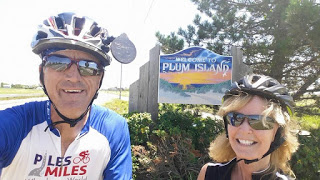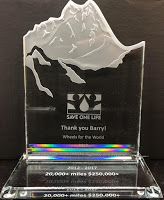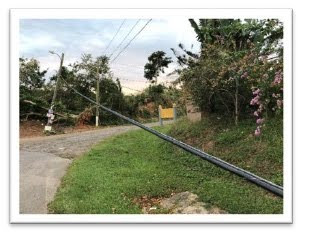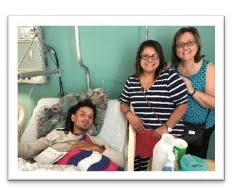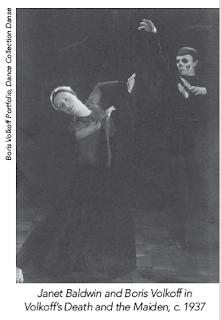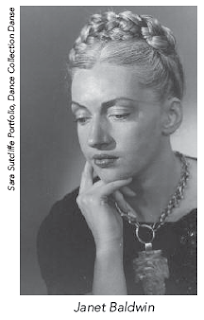Bleeding Disorders Awareness Month Is Almost Here!
With March being officially recognized as Bleeding Disorders Awareness Month, I’m excited to join my voice with millions of others to continue raising awareness for the causes so close to my heart. It’s the perfect time to come together and show the world what makes our community special…beyond just having bleeding conditions.
Continue reading to check out how Aptevo Therapeutics, the makers of the factor IX treatment IXINITY® [coagulation factor IX (recombinant)], are getting involved this coming month.
This is a paid public announcement from Aptevo Therapeutics and does not constitute an endorsement of products or services. When you click on the links in this blog entry, you will be directed to the IXINITY website. LA Kelley Communications always advises you to be a savvy consumer when contacting any company; do not reveal identifying information against your will.
Spread the word and Just B Heard
With a community of millions of Americans who are affected by bleeding disorders, including over 4,000 people living with hemophilia B, we have the power to make a big impact when we work together.
So this March, we’re showing our support for the hemophilia B community that we’re so proud to be a part of by encouraging everyone to lend their voices and help get the word out. Together, we can shine the spotlight on this rare factor IX deficiency and bleeding disorders overall, plus more importantly, the incredible people behind them.
Because you are a vital part of the bigger bleeding disorders community, and you deserve to Just B Heard.
Join us in the IXINITY Family Room on Facebook all month long to see how you can get involved, plus watch fellow community members share their stories at IXINITY.com.
IXINITY INDICATIONS AND IMPORTANT SAFETY INFORMATION
What is IXINITY®?
IXINITY [coagulation factor IX (recombinant)] is a medicine used to replace clotting factor (factor IX) that is missing in adults and children at least 12 years of age with hemophilia B. Hemophilia B is also called congenital factor IX deficiency or Christmas disease. Hemophilia B is an inherited bleeding disorder that prevents clotting. Your healthcare provider may give you IXINITY to control and prevent bleeding episodes or when you have surgery.
IXINITY is not indicated for induction of immune tolerance in patients with hemophilia B.
IMPORTANT SAFETY INFORMATION for IXINITY®
- You should not use IXINITY if you are allergic to hamsters or any ingredients in IXINITY.
- You should tell your healthcare provider if you have or have had medical problems, take any medicines, including prescription and non-prescription medicines, such as over-the-counter medicines, supplements, or herbal remedies, have any allergies, including allergies to hamsters, are nursing, are pregnant or planning to become pregnant, or have been told that you have inhibitors to factor IX.
- You can experience an allergic reaction to IXINITY. Contact your healthcare provider or get emergency treatment right away if you develop a rash or hives, itching, tightness of the throat, chest pain, or tightness, difficulty breathing, lightheadedness, dizziness, nausea, or fainting.
- Your body may form inhibitors to IXINITY. An inhibitor is part of the body’s defense system. If you develop inhibitors, it may prevent IXINITY from working properly. Consult with your healthcare provider to make sure you are carefully monitored with blood tests for development of inhibitors to IXINITY.
- If you have risk factors for developing blood clots, the use of IXINITY may increase the risk of abnormal blood clots.
- Call your healthcare provider right away about any side effects that bother you or do not go away, or if your bleeding does not stop after taking IXINITY.
- The most common side effect that was reported with IXINITY during clinical trials was headache.
- These are not all the side effects possible with IXINITY. You can ask your healthcare provider for information that is written for healthcare professionals.
For more information about IXINITY, please see full Prescribing Information, including Important Patient Information.
You are encouraged to report side effects of prescription drugs to the Food and Drug Administration. Visit www.fda.gov/medwatch, or call 1-800-FDA-1088.
Aptevo BioTherapeutics LLC, Berwyn, PA 19312
IXINITY [coagulation factor IX (recombinant)] and any and all Aptevo BioTherapeutics LLC brand, product, service and feature names, logos, and slogans are trademarks or registered trademarks of Aptevo BioTherapeutics LLC in the United States and/or other countries.
© 2018 Aptevo BioTherapeutics. All rights reserved. CM-FIX-0214





